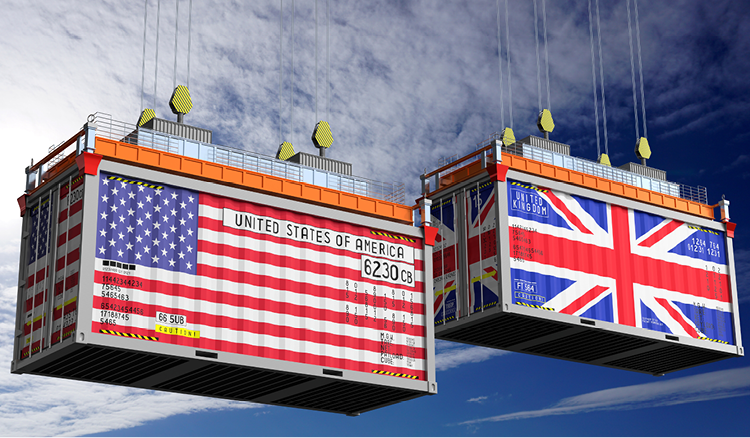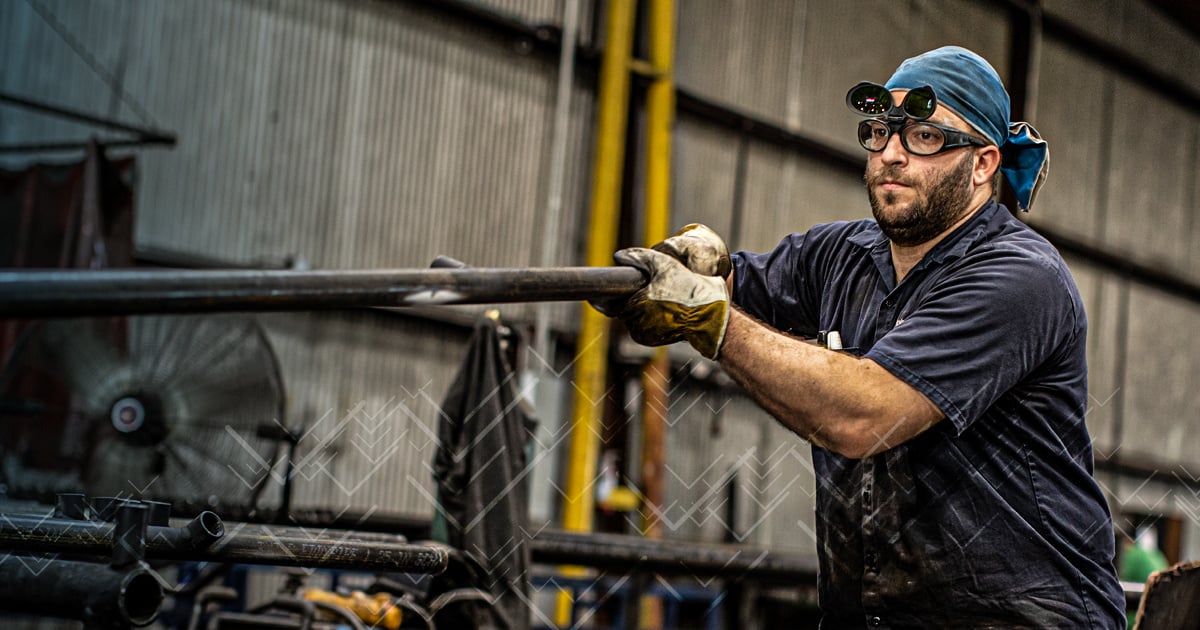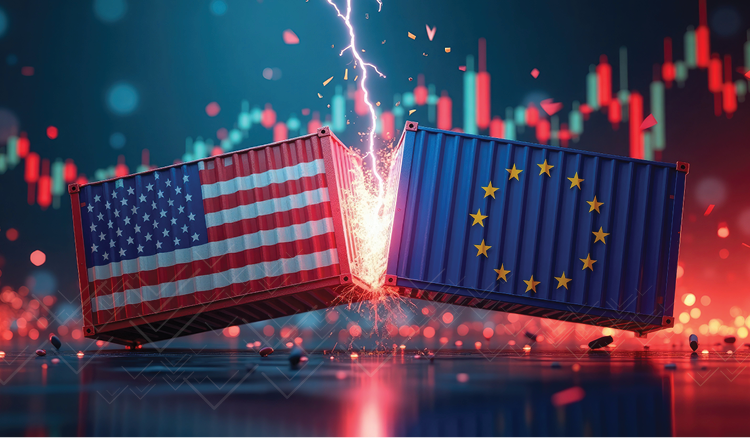Trump 2.0 Week 16 In Review: Discussing The New U.K. Trade Deal, The Upcoming Negotiations With China, and More
As the Trump administration continues to implement new tariffs and trade policies, we’re committed to being a trusted source for information and insights.
Our goal with these weekly recap articles is to provide you with a quick summary of the most important developments from the week that you should be aware of. If you want to hear how others in the industry are navigating these changes, check out our new: U.S. Manufacturing Today Podcast.
In this week’s recap article, topics include:
- Upcoming U.S. - China trade talks
- New trade deal announcement with U.K.
- Trump’s new EO intended to boost domestic drug production
- Audi to potentially open 3 U.S. production facilities
U.S. - China Negotiations To Begin This Weekend
On Tuesday, the White House announced that both Treasury Secretary Scott Bessent and U.S. Trade Representative Jamieson Greer will meet with Vice Premier He Lifeng, a member of the Chinese Communist Party’s ruling Politburo and China’s top economic official in Switzerland this weekend.
Additionally, Bessent and Greer plan to meet with Swiss President Karin Keller-Sutter during their visit, according to their offices.
While the past few weeks have been full of mixed signals, this shouldn’t come as a surprise.
As we wrote about in last week’s article, the decline in exports has truly been a major blow to China, as the U.S. is China’s largest export market by a considerable margin. As our Head of Reindustrialization Matt Horine discusses in episode 8 of the U.S. Manufacturing Today Podcast, their export machine is sputtering and domestic demand isn't making up the difference. This is about more than just policy. It's a survival mechanism. The Chinese government knows that to keep factories open, they need U.S. buyers. This was also echoed in the recent Wall Street Journal article: “Chinese Manufacturers are Scouring the World for New Buyers”.
Additionally, on Wednesday the Chinese government outlined several measures designed to counter the blow to its economy from the U.S. tariffs. In addition to cutting interest rates and reducing bank reserve requirements to help free up more funding for lending, Chinese officials have stated that the government will increase the amount of money available for factory upgrades and other innovations.
With that being said, Treasury Secretary Bessent says that these upcoming negotiations are unlikely to result in a comprehensive trade deal. On Tuesday in an interview with Laura Ingraham of Fox News, he stated “my sense is that this will be about de-escalation, not about the big trade deal.”
In another turn of events, Trump indicated Friday morning that he was willing to lower the tariffs on China, writing in a Truth Social post that “80% tariff on China seems right! Up to Scott B.” This is a stark contrast to his comments earlier in the week when he said he would not consider this.
In next week’s article, we’ll be breaking down what occurred in these meetings.
Trump Announces New Trade Deal With U.K.
On Thursday, President Trump announced that a new trade deal with the U.K. had been reached.
While Trump says that it will be a few weeks before all the details of this deal are ironed out, he did say that it includes billions of dollars of increased access for the U.S. to the U.K. market for American products like beef and ethanol. He also said that tariffs on steel and aluminum will be eliminated between the two countries. In a recent post on his Truth Social account, Trump claims that this new deal will create $5B+ in new export opportunities just for domestic farmers and ranchers.
- The U.K. will reduce or eliminate several non-tariff barriers, and will “fast-track” U.S. imports through U.K. customs.
- Rolls Royce engines will not be subject to tariffs, and a British airline will buy $10 billion in Boeing planes.
- The first 100k vehicles imported into the U.S. from the U.K. will be subject to a 10% tariff, and any additional vehicles beyond that threshold will be subject to a steeper 25% duty.
The 10% tariff imposed on all other imports from the U.K. last month will stay in place however, and Commerce Secretary Howard Lutnick estimates this will raise $6B in revenue for the U.S.
As far as any other ongoing negotiations, Treasury Secretary Bessent declined to say which countries the U.S. could strike a deal with when pressed during testimony this week, but did say that the Trump administration is moving forward with “all deliberate speed” to reach agreements with 18 trading partners.
Trump Signs EO Intended To Boost Domestic Pharma Production and Outlines Plans for New Tariffs
On Monday, President Trump signed an executive order intended to boost prescription drug manufacturing. He also said he’ll place tariffs on pharmaceutical imports “within the next two weeks”. While the specifics remain unclear, Trump has previously stated that they could be high as 200%.
As stated in the order, the FDA has been directed to:
- Eliminate unnecessary requirements
- Streamline reviews
- Work with domestic producers to provide early support before facilities come online
Additionally, the order instructs the FDA to:
- Increase inspection fees for foreign manufacturing plants
- Improve enforcement of active-ingredient source reporting by foreign producers
- Consider publicly listing facilities that fail to comply
The order also instructs the EPA to speed up the construction of factories.
During the signing of the order, FDA commissioner Marty Makary said the agency also plans to conduct surprise inspections of overseas plants, instead of “announced” visits.
He also seems to be on board with Trump’s actions, stating “We have had this crazy system in the United States where American pharma manufacturers in the United States are put through the wringers with inspections, and the foreign sites get off easy with scheduled visits, while we have surprise visits in the United States.”
The main reason for this executive order and new tariff is due to the risks involved with importing such a large proportion of the pharmaceuticals consumed domestically. With roughly 40% of the finished pharmaceuticals consumed in the U.S. being imports, this makes total sense. In the event of geopolitical instability or any supply chain disruptions that either slow down overseas production or halt shipments, tens of millions of Americans would be greatly impacted.
Other Recent Developments
E.U. Threatens Tariffs on $100B of U.S. Goods If Trade Talks Fail
On Thursday, the E.U. threatened to impose retaliatory tariffs on airplanes, car parts, bourbon, and a plethora of industrial and agricultural products if talks with Washington don’t pan out. This comes after weeks of negotiations between the E.U. and American officials have failed to result in any sort of deal.
E.U. Trade Commissioner Maros Sefcovic also warned that if the U.S. imposes new tariffs on lumber, pharmaceuticals, and semiconductors, that more countermeasures would be revealed. Also on Thursday, the E.U.’s executive arm, the European Commission, said it would launch a World Trade Organization dispute against the U.S. over the reciprocal tariffs.
Audi To Potentially Open 3 Production Facilities in U.S.
On Monday May 5th, Audi CFO Jürgen Rittersberger says that the company plans to introduce 10 models to the U.S. and will decide this year on production sites. While Audi doesn’t currently have any production sites in the U.S., its parent group VW does, which gives them a slight edge. With Audi’s Q4 e-tron crossover riding on the same platform as the VW ID.4, its Chattanooga TN plant could potentially be the solution to mitigating these tariffs.
Additionally, construction is currently underway for a $2B facility near Columbia, SC that will produce vehicles for VW Group’s Scout brand starting in 2027. While it hasn’t been confirmed, sources have claimed that the company could potentially build its Q8 e-tron SUV there, instead of in Mexico like initially planned.
A third site would potentially produce the Q6 e-tron, which is currently built at Audi’s headquarters in Germany. While it’s unclear for now where another U.S. production facility would be built, we’ll likely have more information on this in the coming months. Either way, this will be a huge win for American workers and the overall economy.
Audi isn’t alone either, and one of their top competitors, Mercedes-Benz, recently announced plans to build the GLC compact crossover, their 2nd bestselling model in the states, at its Tuscaloosa, AL plant starting in 2027.
Veryable Was Built for This Moment in Time
As new policy changes are rolled out, economic uncertainty and unpredictable demand fluctuations are inevitable. These sudden shifts can put strain on even the best-laid plans, and in such times, those that adapt the fastest are the ones that win. Agility is no longer a luxury—it’s a necessity. Veryable provides the tools to make agility a reality, empowering businesses to pivot in days, not months. In today’s uncertain landscape, this provides a massive competitive advantage.
While others hesitate and wait until the perfect time to react, Veryable users already did, and they’re capitalizing on the opportunities others aren’t prepared for. They’re not dealing with long hiring cycles, restrictive temp staffing contracts, or worried about getting it wrong and ending up over or understaffed. With a flexible workforce in place, these businesses can quickly scale up in just a day or two to meet surging demand, and just as quickly back down again to adapt to sudden slowdowns. Those with a fully fixed workforce simply don’t have this capability, and have to play by a completely different set of rules.
While there may be a lot of uncertainty in today’s landscape, one thing is for certain, and that’s that those with Veryable implemented into their operations will win the next few quarters and beyond.
To learn more about why this is, read this article or click here.
U.S. Manufacturing Today Podcast
Hosted by our Head of Reindustrialization, Matt Horine, this podcast intends to help you cut through the noise you’re seeing across constructed narratives and provide clarity around these once in a generation policy shifts and their impact on the U.S. manufacturing & distribution sectors.
Next week’s episode, which will be released on Tuesday May 13th, will feature Rosemary Coates, Executive Director of the Reshoring Institute and the President of Blue Silk Consulting. You can find this podcast on Spotify, Apple, YouTube, and PocketCasts.
Additional Resources
For more information on the changes taking place under Trump 2.0, make sure to check out our “Navigating Trump 2.0” page. Here you’ll find a breakdown of what’s happened so far and what’s potentially to come, as well as more articles outlining out how you can position your business to thrive amidst these changes.
Previous Posts
Trump 2.0 Week 22 In Review: Discussing The UK Trade Deal, Stalled Negotiations With The EU and Japan, and New Tariff Threats
The Future of Manufacturing and Logistics
Create a free business profile today to explore our platform.






